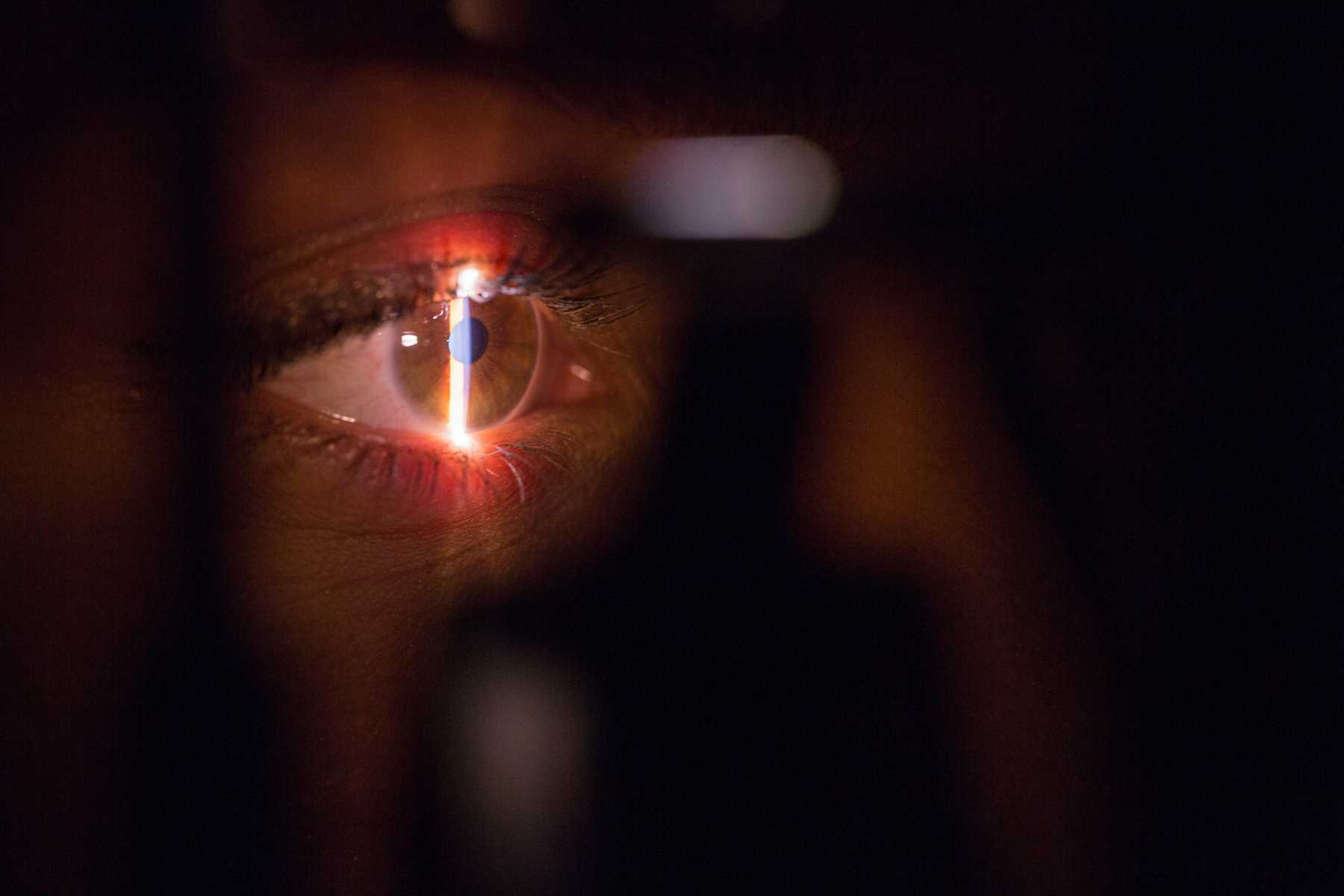Our eye has the ability to see far better than any camera lens. Light passes through a clear lens that is behind our iris. The lens focuses the light so the brain and eye can coordinate to process and develop a clear image. A cataract is a fogging of the lens which causes blurry vision and develops when the lens, which is normally clear, becomes foggy. The patient can get cataracts in both eyes, and it is possible that one eye can have a more severe cataract than the other, or may develop later.
There are warning signs which can indicate that you have developed a cataract:
- Cloudy or blurry vision
- Sensitivity to bright lights
- Changes in the way you see color
- Glare, i.e. seeing a halo around lights
- Sudden recurring prescription changes in glasses
- Double vision
- Poor night vision
Surgery is necessary for cataract treatment to restore vision. There are two techniques to remove cataracts:
- Phacoemulsification Cataract Surgery
Phacoemulsification is the most common procedure for removing cataracts. The surgeon makes a slight incision in the cornea, that is the colored part of the eye, to reach the blurry lens. Using a femtosecond laser, the lens is broken into pieces. Then the doctor suctions lens pieces from the eye and replaces them with new artificial lenses.
- Extracapsular Cataract Surgery
A more developed cataract might be too dense to shatter easily, in such cases phacoemulsification technique is not a suitable option, so the ophthalmologist will recommend extracapsular cataract surgery. In extracapsular cataract surgery, a larger incision is made in the eye. Instead of breaking up the lens and then removing it, the surgeon removes the lens in one piece. Afterward, the ophthalmologist inserts a synthetic lens.
Before surgery, the ophthalmologist will examine the eye and provide a detailed consultation session. If the examination includes a specialized cataract diagnosis, the ophthalmologist will decide whether surgery is recommended. All cataracts ultimately require surgery.
Laser Cataract Surgery Steps:
- Incision: The surgeon will use a femtosecond laser to make an incision in the eye with the assistance of built-in optical coherence tomography imaging. OCT generates a magnified, high-resolution image of the eye. The incision gives the surgeon access to the internal eye to break up and remove the cataract.
- Capsulotomy: It is necessary to remove a section of the thin, clear capsule that protects cataracts for the purpose of accessing the cataract. This process is known as a capsulotomy. This step should be done very carefully so that the rest of the capsule remains intact since it will not regrow. This portion of the cataract surgery is important for ensuring adequate support of the artificial lens that will be replaced with a blurry natural lens.
- During traditional cataract surgery, capsulotomy is done by hand using a small needle and tiny forceps, but capsulotomies that are performed with laser technology enable better positioning of the intraocular lens, which in turn can improve the overall visual outcome from the procedure.
- Phacoemulsification: After successful capsulotomy, the cataract is shattered into tiny pieces using high-speed ultrasound vibrations. The tiny pieces are then aspirated.
- Replacement: After the cataract is removed from the eye, a new lens is inserted into the existing capsule. Dring consultation and examination before surgery, the doctor suggests which new lens types are available. The ophthalmologist will help you decide which lens is suitable for the eye.
Astigmatism Correction During Surgery
If you are suffering from astigmatism, many surgeons prefer astigmatic correction during cataract surgery so that patients have little to no need to rely on prescription eyeglasses or reading glasses.
Care After Surgery
After surgery, the patient may experience itching, mild discomfort, watery eyes, sensitivity to light or blurry vision for a day or two. The ophthalmologist may recommend using eye drops for a few weeks. The drops aid in healing and prevent the eye from getting infected. This is also to control the pressure inside the eye. They may also be asked to avoid touching the eyes, bending over, lifting heavy objects, and facing direct sunlight.
The eye may take six to eight weeks to heal, but you can perform daily activities as soon as a day after the surgery.
Follow-Up Visit
Most surgeons will ask patients for a follow-up visit the day after surgery. The doctor will make sure that the eye has no post-surgery complications and that it is healing normally.
Laser cataract surgery is the latest, safest, and most commonly performed the surgery. The probability of any complications after laser cataract surgery is very limited. For anyone having macular degeneration or a detached retina as well as cataracts, there is a possibility that
removing the cataract and replacing it with a clear intraocular lens might not result in improving eyesight. In such cases, cataract surgery is not recommended.
During the surgery, pain management is achieved with intravenous sedation and local anesthesia. You may not feel anything during the cataract-removal surgery. Afterward, you may experience mild pain and discomfort. The doctor might prescribe a pain reliever to use for the first day or two.
In case both eyes need cataract surgery, the ophthalmologist will probably schedule the surgeries a few months apart. In that way, both eyes will get a chance to heal and the patient can carry on daily life activities. The lens implants for cataracts generally do not need replacement.
In some rare cases, your eye can develop a secondary cataract. Cloudiness can build up on the surface of the artificial lens weeks, months, or years after surgery. Only a quick laser surgery called a posterior capsulotomy is required to fix secondary cataracts, which may only take a few minutes. The ophthalmologist makes an opening using a laser to allow light in again. After this quick procedure, eyesight will improve within 24 hours.
Laser-assisted cataract surgery is the latest and most precise way of performing cataract surgery. Laser cataract surgery overweighs the benefits of traditional cataract surgery because of several benefits:
- Laser surgery allows the surgeon to make precise incisions using a laser in less time
- It allows improved accuracy and results in better consistency
- Laser cataract surgery can provide more correction than traditional surgery
- The laser can limit the amount of ultrasound energy needed to soften the lens before lens removal
Additionally, laser cataract surgery requires less energy and less surgical time, which results in decreased recovery time.
Dr. Gary Fishman and Dr. Simon Wu at Vision Center of New York can help with cataract surgery. They are nationally certified, with more than 30 combined years of experience, they both take pride in their ability to diagnose and help patients maintain and improve their vision. Give them a call today, and get on your way to clearer vision.

